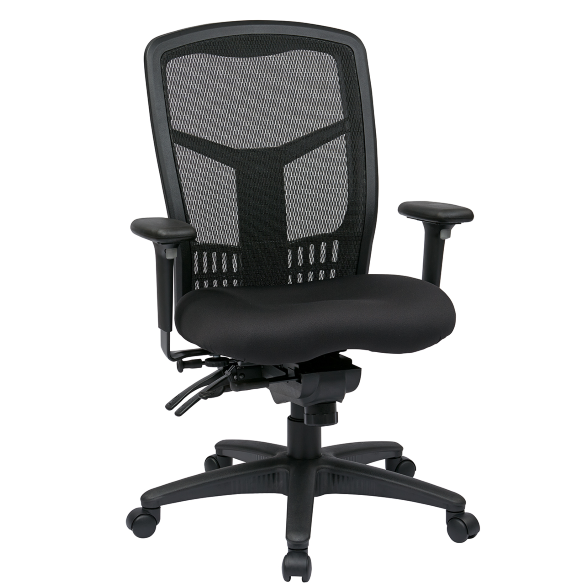Whether you are setting up a home office or revamping an office space for your staff, navigating the world of ergonomic furniture can be difficult. The growing quantity of products on the market makes it difficult to limit your purchasing selections. Choosing the right ergonomic office chair is a crucial aspect of constructing an ergonomic workspace. In this piece, we’ll explain what an ergonomic office chair is, why it’s worth the investment, and what to look for when looking for one.
First, let’s define ergonomics: The Occupational Safety and Health Organization describes it as the “science of matching workplace circumstances and job demands to the capabilities of the working population.”
In other words, ergonomics studies how furniture and items can be created to complement the human body and create healthy working conditions. An ergonomic chair, then, seeks to alleviate body problems and strains caused by prolonged use of a normal chair. It is a chair designed to provide the best possible support for the body when sitting at a desk. It considers movement, comfort, weight distribution, posture, and back support. An ergonomic office chair will have several adjustable pieces so that it fits each user uniquely and allows each user to sit comfortably at work.
What should you look for in a decent ergonomic office chair?

Adjustability:
What distinguishes a superb ergonomic office chair is its ease of adjustment to your specific demands. Because everyone is different, each chair must be able to adapt to its user. Make sure the chair is adaptable for whatever function it will serve by taking into account which will be sitting in it and the situation in which it will be used. The adjustability of a chair’s numerous sections is included in the majority of the following criteria.
Seat height:
An excellent ergonomic chair will allow you to change the seat height from 15 to 22 inches above the floor. This size range is appropriate for those standing 5’6″ to 6’4″ tall. Your feet should be flat on the floor, and your knees should be at a 90-degree angle at the appropriate height. This will relieve the strain on your knees and lower back. A chair with pneumatic adjustment is excellent because you can alter the height while sitting in it, but a chair with a rotating mechanism will also function to adjust the seat pan height.
Seat width:
The normal seat width is between 17 and 20 inches wide to allow for adequate thigh support. Each user must sit comfortably on a quality seat pan, with at least 1 inch on either side of their hips, but not so far apart that their arms must stretch to meet the armrests.
Seat depth:
A decent ergonomic office chair should have a seat deep enough so that the user may lean back against the backrest while still having 2 to 4 fingers’ worth of space between the end of the chair and the user’s legs. The seat must support at least 34 of the thighs. Look for chairs with a slidable seat, which allows the user to slide the seat in and out while sitting.
Brands We Carry















Backrest:
A typical backrest ranges in width from 12 to 19 inches. It must support the spine’s natural curve. To enhance blood flow, an ergonomic office chair should encourage active sitting rather than static posture. As a result, it should allow its users to experiment with different recline postures to relieve pressure on their lower backs. Pressure on the lumbar discs and muscular activity are at their lowest with a reclining degree of 110 to 130, depending on body type.
Thanks for your message! We’ll be in touch soon.

